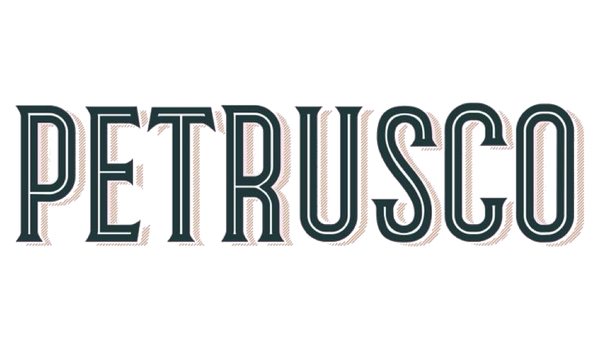Introduction to Caspian Caviar: A Delicacy of Prestige
Caspian caviar, also known as “black gold,” is one of the world’s most luxurious foods. Harvested from sturgeon fish found in the Caspian Sea, this delicacy has symbolized wealth and luxury for centuries. Why the prestige, you ask? It’s all about rarity and the painstaking process of harvesting and preparation. The sturgeons, ancient fish species, take years to mature and provide caviar. Plus, not all caviar is created equal. The finest grade, known as “Beluga,” comes from the largest sturgeon and is cherished for its large, delicate eggs that offer a rich, buttery flavor. The rarity of these fish, combined with the meticulous care in harvesting and preparation, sets Caspian caviar apart. It’s more than just food; it’s a symbol of refinement and opulence, served at the most exclusive events and restaurants worldwide. When you indulge in Caspian caviar, you’re not just tasting a delicacy; you’re experiencing a piece of history and luxury that has been savored by royalty and the elite for generations.
What Exactly is Caspian Caviar?
Caspian caviar, a luxury treat savored across the globe, comes from the sturgeon fish found mainly in the Caspian Sea. This delicacy is famed for its rich, unique flavor and is often associated with opulence and fine dining. The process of collecting caviar is meticulous - it involves harvesting eggs from the sturgeon, a task that requires precision and care to ensure the highest quality. There are different types of Caspian caviar, categorized based on the sturgeon species, such as Beluga, Osetra, and Sevruga. Each type boasts a distinctive taste, texture, and color. This caviar’s prestige isn’t just about its taste, but also its rarity and the intricate process of harvesting and preparation, making it a symbol of luxury and wealth. So, when you indulge in Caspian caviar, you’re not just enjoying a delicacy; you’re partaking in a rich history and tradition of culinary excellence.
The Historical Significance of Caspian Caviar
Caspian caviar has a rich history that stretches back centuries and is deeply entwined with the cultural and economic fabric of the regions surrounding the Caspian Sea. This luxurious delicacy comes from sturgeon, ancient fish species that have roamed these waters for over 250 million years. Kings, emperors, and the elite of society have always prized it as a symbol of wealth and sophistication.
The Persians were among the first to recognize the value of sturgeon eggs, believing they had medicinal properties. As trade routes expanded, so did the fame of this exquisite treat, making it a coveted item among the aristocrats of Russia and Europe. The Russian Tsars were particularly known for their love of caviar, setting the groundwork for Russia’s longstanding tradition as one of the premier producers of caviar in the world.
In the 19th century, the demand for Caspian caviar in European courts further elevated its status. It wasn’t just a food item; it was a geopolitical tool, a luxury that could forge alliances and showcase prosperity. The trading houses and fisheries along the Caspian Sea became centers of wealth and power, thanks to the insatiable appetite for this ‘black gold’.
However, with high demand came overfishing, leading to the need for conservation efforts and the introduction of sustainable farming practices in modern times. This shift has helped preserve the tradition of Caspian caviar, ensuring that future generations can continue to enjoy this piece of culinary history. Today, Caspian caviar remains a symbol of luxury and a testament to its rich historical legacy.
Harvesting Caspian Caviar: A Detailed Process
Harvesting Caspian caviar is meticulous work that demands precision and care. It all starts with choosing the right sturgeon. Not any fish will do; only the healthiest and mature ones are selected for caviar. Once chosen, the fish undergo a process where their eggs are carefully extracted. This is no small task. It’s carried out by experts who know exactly how to handle the fish and their precious cargo without damaging the eggs. The timing of this process is crucial. It must happen at just the right moment when the eggs are ripe for harvest yet before the fish releases them naturally. This precision ensures the highest quality caviar, distinguishing Caspian varieties as some of the best in the world. After extraction, the eggs are sieved to separate them from other tissues, washed with clean water, and then salted. This salting is not just for flavor; it’s a critical preservation technique that has been perfected over centuries. The amount of salt and the exact methods used are closely guarded secrets, passed down through generations of caviar producers. Each step of this process, from selecting the right sturgeon to the final salting, shapes the quality, texture, and flavor of the caviar. That’s why Caspian caviar stands out. It’s not just about the eggs; it’s the tradition, skill, and care that go into every jar.
Grading the Caviar: How Quality and Price are Determined
Caviar isn’t just fish eggs. It’s a delicacy that stands for luxury and finesse. When it comes to grading caviar, two things matter most: taste and texture. The size, color, and firmness of the eggs play a big role too. The finest caviar comes from the oldest sturgeon, costing you more. Why? Older sturgeon produce eggs with richer flavor and more elegant texture. Then there’s the method of harvesting and processing. The less handled the caviar, the better. It’s about keeping it pure. Traditional or “Malossol” caviar means “lightly salted” – a sign of high quality. But remember, good caviar doesn’t just taste salty; it should unveil layers of nutty, buttery, and even fruity flavors. Price tags vary with scarcity and breed of sturgeon. Beluga, known for its large, silky eggs, sits at the top, commanding eye-watering prices. In contrast, Sevruga offers a more accessible, yet still luxurious, option. So, when you’re picking your next tin of caviar, think beyond price. Consider the age of the sturgeon, the harvest method, and the promise of a flavor journey. That’s the art behind the prestige of Caspian caviar.
The Journey from Harvest to Table: Preserving the Delicacy
The journey of Caspian caviar from harvest to table is an art, preserving its prestige and delicate flavor. Right after catching, the sturgeon, the fish that gives us caviar, undergoes a careful process. Experts select the finest fish. They then harvest the eggs with precision, ensuring not to harm their quality. Once the eggs are collected, the real magic starts.
Immediately, the eggs are cleaned and salted. This step, called curing, is crucial. It’s where caviar gets its distinctive taste. But, it’s not just about adding salt. The amount and type matter. Too much salt can overpower the eggs’ natural flavors, while too little won’t preserve them well.
After curing, the caviar is packed. It needs to be in the right container, usually glass or tin, to avoid affecting its taste. Then, it’s all about keeping it cool. Caviar must be stored and transported at the right temperature. If it gets too warm, it spoils; too cold, and it can lose its texture and flavor.
When it finally makes it to your table, Caspian caviar represents not just a luxurious treat, but a journey. A journey of careful selection, precise curing, and meticulous handling. This whole process helps maintain its revered status and ensures that when you taste it, you’re experiencing the pinnacle of culinary craftsmanship.
Serving Caspian Caviar: Traditional Methods and Modern Twists
Serving Caspian caviar is an art, blending tradition with modern creativity. Traditionally, caviar is served on a small, cold, blini or lightly toasted bread, topped with a dollop of sour cream. It’s a method that has stood the test of time, showcasing the rich, unique flavor of the caviar without overpowering it. Simplicity is key. Keep the accompaniments minimal. Think chopped onions, capers, and a squeeze of lemon for a touch of acidity. However, the modern culinary world loves to push boundaries. Chefs are incorporating Caspian caviar into dishes you wouldn’t expect, like topping it on a slice of pizza or stirring it into pasta for a luxurious twist. The balance is finding ways to highlight the caviar’s prestige while making it accessible to the palates of today. Whether opting for the traditional route or a modern twist, remember the golden rule: never use metal spoons with caviar. Always go for spoons made of mother of pearl, bone, or even plastic. Metal interacts with the caviar’s flavors, and we wouldn’t want that. So, when serving Caspian caviar, whether sticking to time-honored methods or experimenting with new ones, the aim is to respect the delicacy’s rich heritage while enjoying its luxurious taste.
Pairing Caspian Caviar: Food and Drink Combinations
Pairing Caspian caviar is more art than science, aiming to enhance its luxurious taste without overwhelming it. Start simple with traditional blinis or toasted bread, topped with a dollop of caviar and a little bit of sour cream or unsalted butter. These bases provide a neutral canvas, letting the caviar’s flavors be the star. For a drink, chilled vodka is a classic choice. Its clean, crisp taste complements the caviar without stealing the spotlight. Alternatively, a dry champagne pairs beautifully, the bubbles and acidity cutting through the richness of the caviar. Remember, the goal is balance. You want each sip and bite to elevate the experience, making every moment with Caspian caviar a memorable one.
The Ethical and Environmental Considerations of Caviar Production
When we talk about the fancy delicacy of caviar, it’s crucial to touch on the ethical and environmental aspects of its production. Caviar, the salted eggs of certain sturgeon fish, has long been a symbol of luxury. But its journey from water to table is not without controversy. Firstly, the overfishing of sturgeon in wild habitats has led to drastic declines in their populations. This is a big red flag for conservationists. To tackle this, many producers have shifted to sustainable farming practices. These aquafarms mimic natural conditions for sturgeons, ensuring they are healthy and can produce high-quality caviar without harming wild stocks.
Another point to consider is the method of harvesting caviar. Traditional methods involved killing the fish, which further endangered populations. Nowadays, more ethical approaches allow for the extraction of caviar without harming the fish, a practice that supports conservation efforts and animal welfare.
Lastly, there’s the issue of how the farms operate from an environmental standpoint. Good aquafarms need to manage their waste and use resources efficiently to minimize their ecological footprint. Choosing caviar from sources that prioritize sustainability and ethical practices makes a difference. It’s not just about indulging in a luxury; it’s about supporting methods that can ensure this delicacy remains available for future generations without sacrificing our planet’s health or biodiversity.
Concluding Thoughts: The Timeless Prestige of Caspian Caviar
Caspian caviar carries an undeniable prestige that’s been celebrated for centuries. It’s not just about its silky texture or unique taste; it’s about the tradition and meticulous care behind its harvest and preparation. This delicacy symbolizes luxury and sophistication, commanding high prices worldwide. The careful selection of sturgeon, the sustainable harvesting practices, and the art of curation all play into why Caspian caviar is revered. It’s a taste of history, a marker of culinary excellence, and a tradition that continues to impress the most discerning palates. Whether enjoyed on a special occasion or used to elevate a dish, Caspian caviar’s timeless prestige is a testament to its unmatched quality and the dedication of those who bring it from the Caspian Sea to your table.

